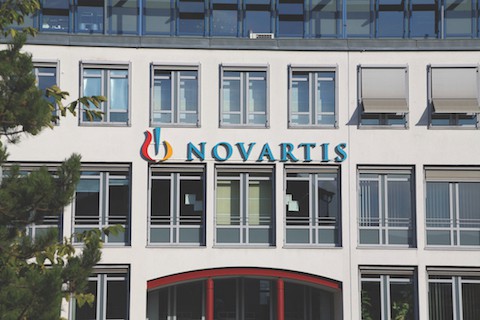
Novartis has published the full results from the phase 3 IRIDIUM study of its Enerzair Breezhaler in patients with uncontrolled asthma.
The results, which were published in The Lancet Respiratory Medicine, found that the Enerzair Breezhaler (indacaterol acetate, glycopyrronium bromide and mometasone furoate, IND/GLY/MF) demonstrated statistically significant improvements in lung function compared to treatment with once-daily QMF149 (indacaterol acetate and mometasone furoate).
However, Novartis’ drug did not meet the key secondary endpoint of improvement in asthma control as measured by Asthma Control Questionnaire (ACQ-7) scores. In secondary analyses, improvements in lung function and clinically meaningful reductions in moderate-to-severe and severe asthma exacerbation rates were observed with high-dose Enerzair Breezhaler, as compared to high-dose Sal/Flu (salmeterol xinafoate/fluticasone propionate).
The overall occurrence of adverse events and serious adverse events for both Enerzair Breezhaler and QMF149 in the study were generally low and comparable among treatment groups.
So far, medium- and high-doses of Novartis’ drug have been approved in Japan, and high-dose Enerzair Breezhaler has also been approved in the EU and Canada, with these regulatory submissions supported by the results from the IRIDIUM study.
Earlier this week, the European Commission approved Enerzair Breezhaler as a maintenance treatment for asthma in adults not adequately controlled with a maintenance combination of a long-acting beta2-agonist (LABA) and a high dose of an inhaled corticosteroid (ICS), who had experienced one or more asthma exacerbations in the previous year.
“The IRIDIUM data shows that once-daily treatment with a combination of IND/GLY/MF has the potential to improve lung function and reduce exacerbations in people who continue to experience symptoms despite receiving a LABA/ICS, which is the standard of care,” said Huib Kerstjens, head of the Department of Pulmonology at the University Medical Center Groningen, Netherlands.
“This data is encouraging because achieving optimal symptom control in asthma remains challenging; at least 45% of patients at GINA steps four and five remain uncontrolled, which can lead to reduced quality of life, decreased work productivity and increased emergency or hospital-based medical care,” he added.
Although there are many new and innovative treatments for asthma, over 40% of patients with severe asthma remain uncontrolled. Patients with uncontrolled asthma may underestimate the severity of their disease and are therefore at a higher risk of exacerbation, hospitalisation or death.




